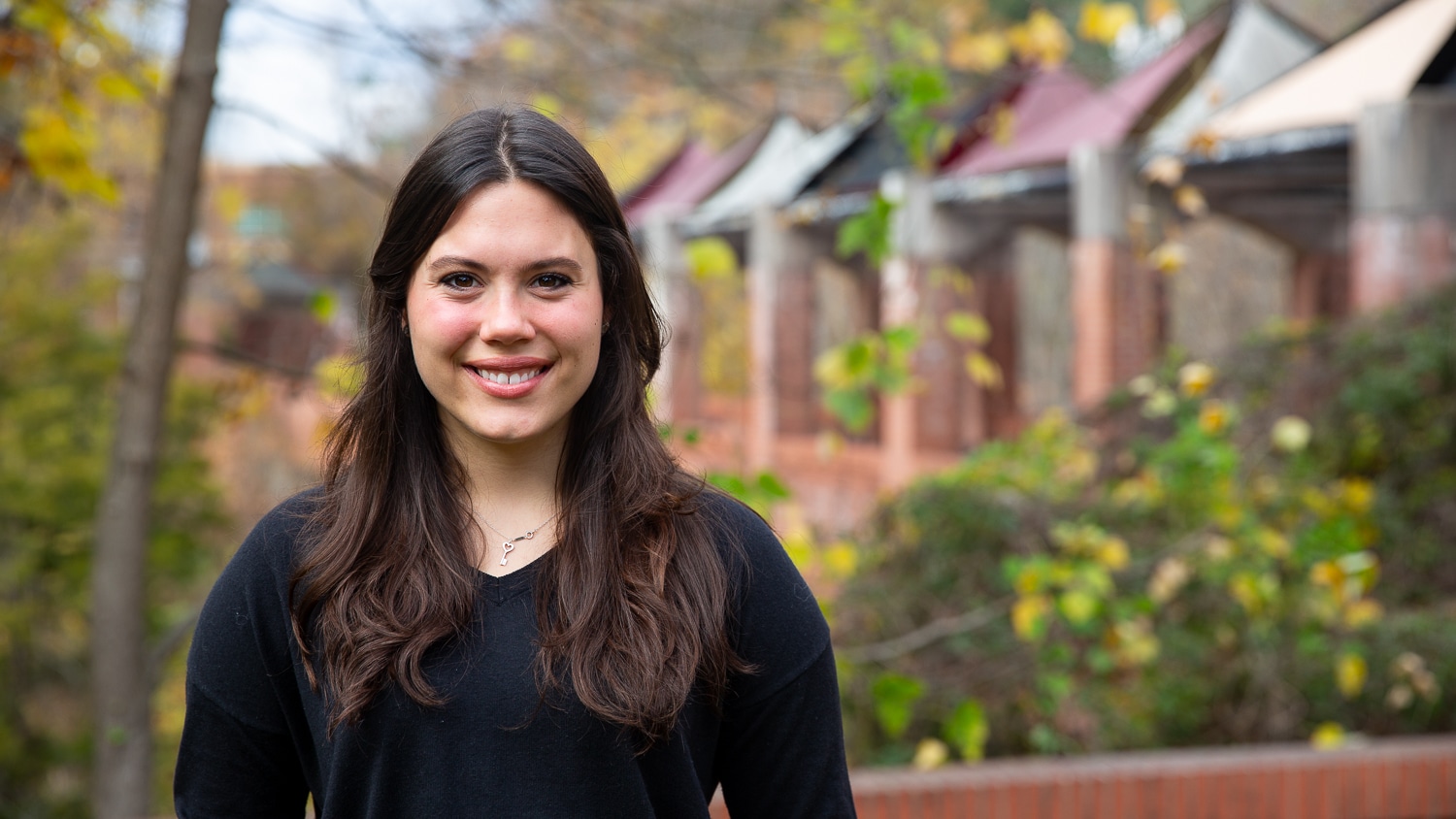First-Year Students Create Skirts, Learn Design Fundamentals

By Sarah Stone
Walk into the fashion and textile design (FTD) studios on the fourth floor of the Wilson College of Textiles, and the first thing you’ll notice are the circles.
Large circles made out of paper are placed on the floor, where first-year fashion design (FD) and textile design (TD) students are hard at work with a ruler or pen in hand. Look a little closer, and you’ll see smaller circles too. They’re drawn on the pages of the students’ composition notebooks and filled with colorful shapes and lines.

While these circles, and the circle skirts they’ll ultimately become, might initially capture your attention, they simply serve as a canvas for color and design. Faculty members say it’s crucial that students in both FD and TD master these two concepts early. That’s why the two cohorts, 32 students in total, always take this course together.
“When we ask a group of people what is the first thing that they notice about an apparel or home decor product, a textile product, color is usually the first thing,” Associate Professor Anne Porterfield says. “And so we really want them to be thinking about color from a very early point in their career.”
Through the “color project,” students are immersed in the full design process within their first month of classes. In fact, they’re graded on how they move through that process in addition to the final product.

“We’re asking them to really step by step walk us through the process,” Porterfield, who has taught this course for seven years, explains. “So the first thing that we do when we grade the project is we look at their sketchbooks so that we can see from day one: How did you make these decisions? What was it that inspired this design? How did you execute the design?”
That process starts with inspiration. Each student is tasked with creating as many surface designs as possible based on a photograph of their choosing. The designs, which must center around the interaction between colors, are then translated to a 3-D design software called Clo, which allows a student to see how draping transforms a pattern.
“It’s a lot different sometimes, what you have designed versus how it looks on a skirt,” TD student Shayleigh Larsen says. “Sometimes it’s a lot better and it creates textures, and sometimes it’s worse and it looks like a hodgepodge.”
Next, critiques from classmates, Dr. Porterfield and Assistant Professor Janie Woodbridge, who co-teaches the course, determine which surface design a student will bring to life on their skirt. Giving and accepting that critique is a lesson in itself.
“A lot of the students are learning how to be reflective and to talk about their work and talk about design in a new way that they may not have had to before,” Dr. Woodbridge says.
Woodbridge adds that many students don’t participate in a formal critique before they graduate high school.
“That’s very new,” FD student Bella Reeves affirms. “Because all of my art prior has always been what I wanted, no restrictions. Nobody telling me I have to fit certain criteria.”

Students then develop their spatial and scaling skills to sew the skirt and transfer their design onto the garment using paint sticks.
“Through this experience, students learn to predict what you might have to test in order to be able to complete a task really efficiently,” Porterfield says. “So doing the fabric testing, doing proof of concepts.”
While acknowledging all of the tangible skills and techniques they’ve learned throughout this project, first year students say the most valuable part of the color project for them has been learning to design with a product and audience in mind.
“This class is kind of telling me that you’re not just designing for yourself,” FD student Oliver Rice says. “You’re designing for other people.”
First-year students share the inspiration for these skirts in their own words:

Oliver Rice
“A lot of my images are really full of life and vibrant. A lot of them are flowers. A lot of light colors. My skirt displays spring in life.”

Shayleigh Larsen
The inspiration for my skirt is actually a jar of olives, and I chose these colors that I saw on the olive jar because they were sort of like the colors that you would see in an 1800s painting.

Janie Pannill
“I did this criss crossing pattern along with some orange bands. I used this picture of a sunset, and I drew motifs from the road with the gravel and the grass that’s behind side of the road, and the colors are all drawn from it.”



